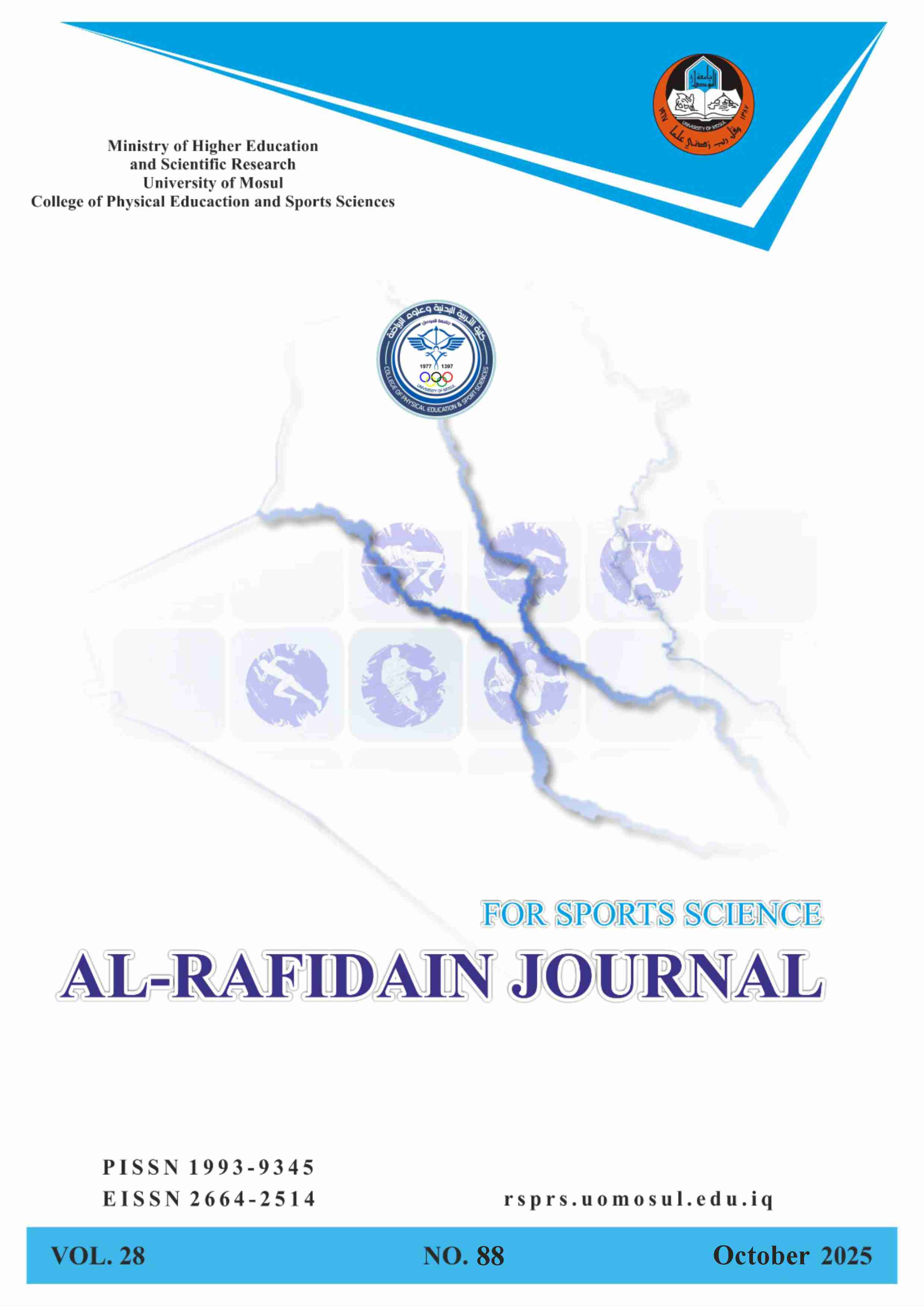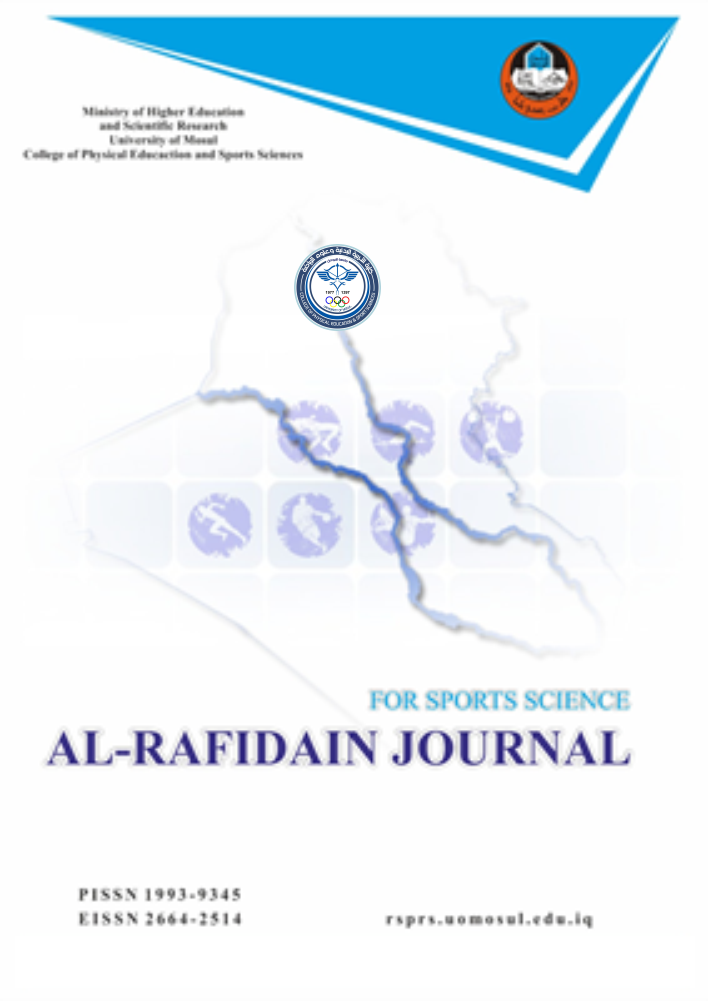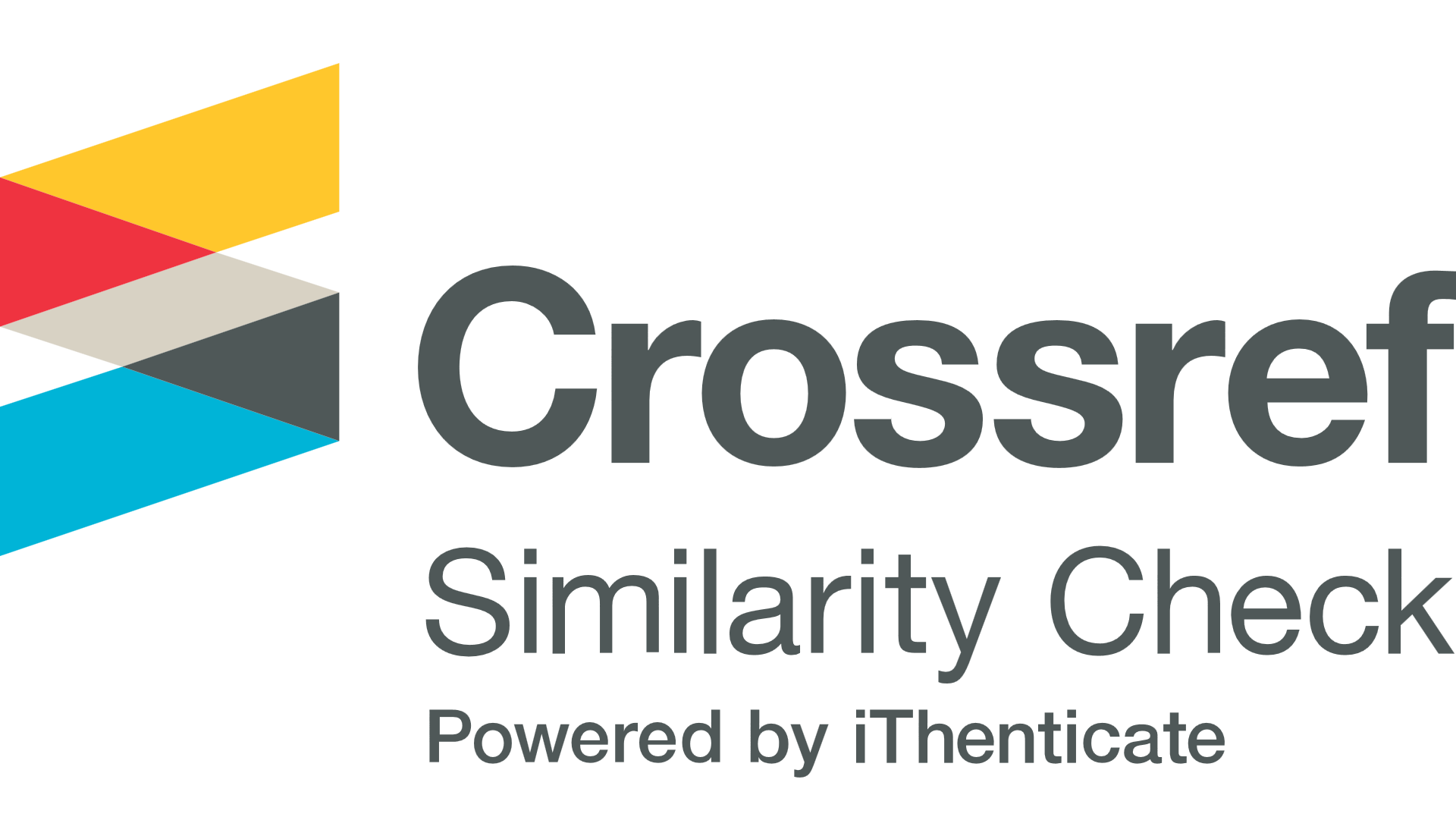The relationship between certain kinematic variables, specific coordination skills, and the accuracy of the underhand reception in volleyball
Published
Oct 24, 2025Pages
290-313Abstract
The research aimed to examine kinematic variables and their relationship with accuracy during the execution of the underhand reception skill in volleyball.
- Identify the values of some kinematic variables of the underhand reception skill,
- Determine the accuracy scores of the technical performance of the underhand reception skill in volleyball.
- Identify the values of specific coordinative abilities (under study).
- Finally, to examine the relationship between accuracy values and certain kinematic variables of the underhand reception skill, as well as the connection between some kinematic variables and specific coordinative abilities — specifically the ability to respond quickly and to adapt to changing situations — in the technical performance of the underhand reception skill among volleyball players.
Methodology
The researcher used a descriptive correlational approach. The sample was deliberately chosen from players of Al-Shamal Refinery Club, who competed in the Iraqi Volleyball Premier League during the 2022–2023 season.
To collect data, the researcher used various tools, including:
- Scientific sources and references,
- Personal interviews,
- Questionnaires,
- Tests,
- Measurements,
- And scientific technical observation.
The research sample was recorded using two cameras:
- The first camera, CASIO EX-FH25 EXILM digital, with a speed of 300 frames per second, was placed 5.44 meters from the center of the circle drawn in the middle of the court, perpendicular to the left side of the player's body, at a height of 1.28 meters from the ground to focus the lens.
- The second device was an iPhone 12 Pro Max, recording at 240 frames per second, placed 4.80 meters from the center of the circle, perpendicular to the right side of the player's body, and at a height of 1.28 meters from the lens focus.
A 1-meter-long scale was used and filmed both horizontally and vertically at the center of motion before the experiment started to ensure measurement accuracy.
The statistical methods employed included:
- Percentages,
- The mean,
- Standard deviation,
- Coefficient of variation,
- And Pearson’s straightforward correlation coefficient.
Findings
There was variation in the achievement of coordinative abilities in their significant correlations with kinematic variables during the execution of the underhand reception skill.
References
- Abdullah, E. E. M., & Badawi, A. A. (2007). Kinesiology and biomechanics between theory and application. Dar Al-Wafa for the World of Printing and Publishing.
- Al-Athari, D. F. M. (2019). The effect of specialized exercises using a rebound training field on key bio-kinetic abilities and kinematic variables of compound and straightforward foil attacks (Unpublished master’s thesis)—College of Physical Education and Sports Sciences, University of Kufa.
- Al-Dulaimi, N. A., et al. (2014). Modern volleyball and its specialized requirements. Journal of Sports Sciences.
- Al-Karmadi, A. S. (2015). Principles of biomechanics and kinetic analysis (1st ed.). Al-Hodeidah, Yemen.
- Al-Shalqani, D. H. M. (2016). The contribution of some kinematic variables in predicting the accuracy of serve reception in volleyball. Sadat University.
- Dhnoon, M. Y., & Al-Hasso, R. A. R. (2013). Fundamentals of sports training. Ibn Al-Atheer House for Printing and Publishing, University of Mosul.
- Hara. (1975). Principles of training (A. A. Naseef, Trans.) (1st ed.). Al-Tahrir Offset Press.
- Hassanein, M. S., & Abdel Moneim, H. (1997). Scientific foundations of volleyball and measurement methods – physical, skill, cognitive, psychological, and analytical. Dar Al-Fikr Al-Arabi.
- Mahjoub, W. (1985). Kinesiology (motor learning) (1st ed.). Mosul University Press.
- Najib, G. (2016). The effect of a proposed training program on developing some coordination abilities, specifically the ability to balance, among young football players aged 9–12 (Unpublished master’s thesis). Institute of Sports Sciences and Techniques, Mohamed Boudiaf University, M'Sila, Algeria.
- Omar, H. M. (2019). Topics in biomechanics (1st ed.). Kirkuk University Press.
- Shaber, A. A. A. (2009). The relationship of biokinematic variables of the libero player in defensive skills and the percentage of their contribution to the accuracy of the volleyball connection. Al-Qadisiyah Journal of Sports Education Sciences, 9(3). (Special issue for the first scientific conference on biomechanics).
- Shawky, A. A. H., & Abdel Qader, R. A. (2016). The effect of coordination abilities training on biomechanical variables and performance in receiving the serve among female volleyball players. Journal of Sports Science Applications, (16), Faculty of Physical Education, Abu Qir, Alexandria.
- Taher, K. H., & Al-Eidawi, H. S. (2021). Biomechanical analysis of the skill of receiving the smash serve at the moment of collision with the ball in volleyball. Journal of Sports Sciences, 14(5).
Identifiers
Download this PDF file
Statistics
How to Cite
Copyright and Licensing

This work is licensed under a Creative Commons Attribution-NonCommercial 4.0 International License.







